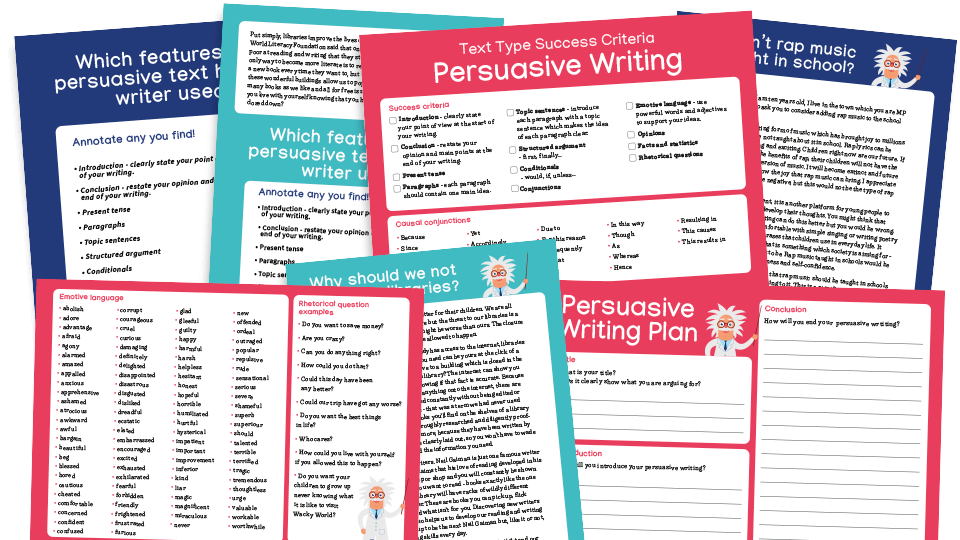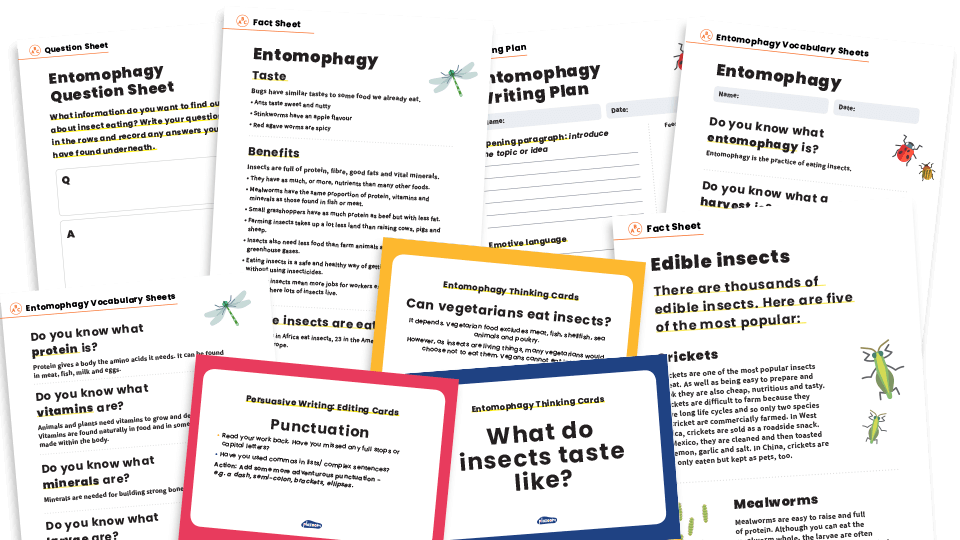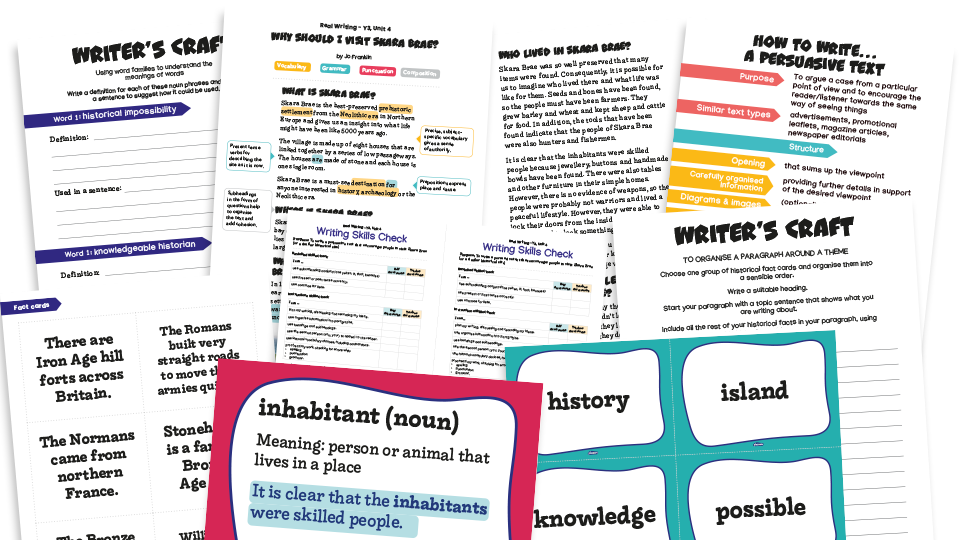Persuasive writing is a very interesting genre to teach in KS2. Other types of writing might involve an element of fantasy or make-believe. However, if you think about it, persuasive writing must be one of the few that actually expect you to act upon it.
It is also fascinating to think that many of us would, as readers, be quite capable of pointing out the ways in which our beliefs, feelings and actions are being manipulated, yet we often fall for it anyway.
Now’s your chance to introduce your KS2 class to a range of persuasive writing techniques that will help them produce convincing textual arguments, from promotional leaflets to persuasive letters.
What is persuasive writing?
Here’s a question that might be fun to put to your KS2 students: is persuasive writing fiction or non-fiction?
Your first answer would probably depend on how cynical you are. Nevertheless, it should be seen as a non-fiction genre because any proposition being promoted should be grounded in honesty. That’s why we have things like advertising rules, libel laws and trading standards.
Even so, we all know that some persuasive writing stretches the truth to breaking point. At the very least, it often presents a very biased or one-sided view. As a teacher, you should insist on pupils using language to persuade, rather than deceive.
Persuasive writing techniques for KS2
Teaching persuasive writing in KS2 might seem akin to teaching dark arts in a school for magic. However, it’s really just another form of effective writing or writing for a purpose – and every writer should be doing that!
Remember, not every trick will work in every situation, but pupils must have a good understanding of a range of persuasive writing features. Here are a few of the most obvious ones.
Features of persuasive writing – Powerful vocabulary
The choice of words really matters in persuasive writing – almost as much as in poetry. A quick internet search reveals a broad consensus as to what the most powerfully persuasive words are.
Here are just a few to share with your pupils, remembering that not every word will be relevant to every persuasive writing task. Nor are they necessarily the most adventurous words in the dictionary. They're just known to be effective.
- New, free and save – these always grab people’s attention, for obvious reasons
- Because – always a useful one because people like a good explanation.
- Easy and guaranteed – these tend to put the reader’s mind at rest.
- Discover – this is like a more active version of new
- Hurry – this builds a sense of urgency.
- Secret – there’s a thrill in knowing what others don’t.
Grabbing the reader’s attention
We’re talking to you!
Wherever possible, encourage pupils to write a persuasive piece in the second person. This is because it's much easier to persuade someone if they think you are addressing them directly. Obvious really, wouldn’t you agree?
Persuasive language – Hype
Short for hyperbole, hype is one of the most important persuasive strategies featured in more commercial forms of persuasive writing.
This is where that line between fiction and non-fiction can get blurred because hyperbole means exaggeration.
Encourage pupils to use words like amazing, outstanding and incredible, which are powerful without being quantifiable.
Words like unbeatable are certainly hyperbolic but might stretch credibility too far, especially since almost anything can be beaten.
A final thought on the subject of hyperbole: one exclamation mark is enough, and often one too many.
Logical arguments and order
This might seem surprising at first, but putting your ideas in the right order is a crucial part of this genre.
After all, a good persuasive text should be like a well-thought-through argument, giving the reader a good reason to believe you.
If the order of your persuasive essay or persuasive letter doesn’t make sense, nor will the logic and your point might be lost.
That’s why planning is so important, not only to make sure you’ve thought of the best points, but also to check that you’ve lined them up in the most compelling order.
Rhetorical questions
Have you ever wondered why advertisements use questions? Do you want to be a more persuasive writer? If so, you need questions in your writing.
Questions draw the reader into your argument because you can hardly avoid answering them the moment you read them, even if it’s only subconsciously.
Just make sure that your question has no chance of making the reader say “No!”, because then you will have lost them.
KS2 persuasive writing resources
Once you have shown your pupils the toolkit, give them plenty of chances to hone their skills. Our persuasive writing challenge mat resource is a great way to help them apply their knowledge through a range of writing challenges.

Or why not try our Grammar Burst pack for using cohesive devices in persuasive writing? It's a series of five lessons culminating in an extended writing task.

You could also try our persuasive writing model text pack, complete with vocabulary bank, writing plan and success criteria.

Or, if you’re feeling brave enough, take a look at our Bug Banquet writing topic. This builds towards your pupils writing a text to persuade you to try eating insects.

KS2 persuasive writing examples
Adverts
Have a break, have a Kit Kat.
“Gillette, the best a man can get.” (hyperbole)
Persuasive advert WAGOLLs
This KS2 writing pack from our WAGOLL collection contains an example of a persuasive leaflet and guides pupils to create their own, using persuasive language, layout features and modal verbs to entice readers to visit a tourist attraction.
Similarly, this KS2 resource pack features two WAGOLL persuasive adverts – one promoting a trampoline park and one for a playful robot teacher.
Speech
“I have a dream that my four children will one day live in a nation where they will not be judged by the colour of their skin but by the content of their character.” - Martin Luther King Jr
Persuasion
Argument: You should do your homework first, then you have all weekend to play and don’t have to worry about it.
Essay: Is it all right to boil a sentient creature alive just for our gustatory pleasure? - David Foster Wallace, ‘Consider the Lobster’
Persuasive writing WAGOLL
This Year 3 writing unit uses a model persuasive report on visiting the Neolithic site of Skara Brae to teach pupils how to plan, structure, and write their own persuasive texts, such as leaflets or magazine articles.

Rhetoric/rhetorical questions
“Is the Pope Catholic?”
Opinion stated as fact
This is the greatest invention of the 21st century!”
Emotional language
“I will be as harsh as truth, and as uncompromising as justice. On this subject, I do not wish to think, or to speak, or write, with moderation.” - William Lloyd Garrison
“For just £5 a month you can help her and others in her village access clean water that will save lives.”
Repetition
”...and that government of the people, by the people, for the people shall not perish from the earth.” - Abraham Lincoln
Rhyme
“If the gloves don’t fit, you must acquit” - Johnny Cochran
Sue Drury qualified as a primary teacher in 1999. Teaching pupils from Year 1 to Year 8, she has held a variety of positions including maths and English subject leader, year leader, and assistant headteacher. Sue has mentored students and NQTs, offering guidance and advice using her years of experience. She created many of Plazoom's literacy resources.